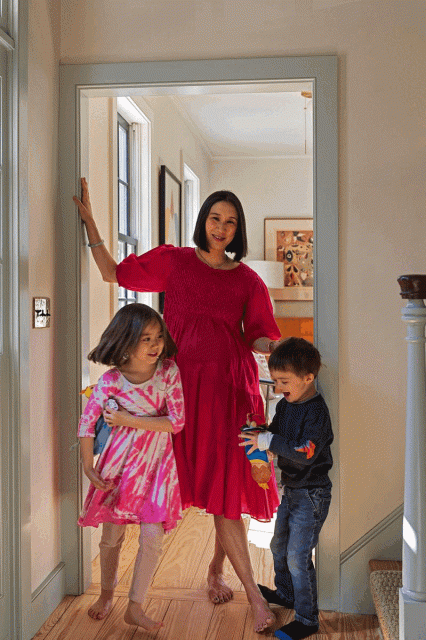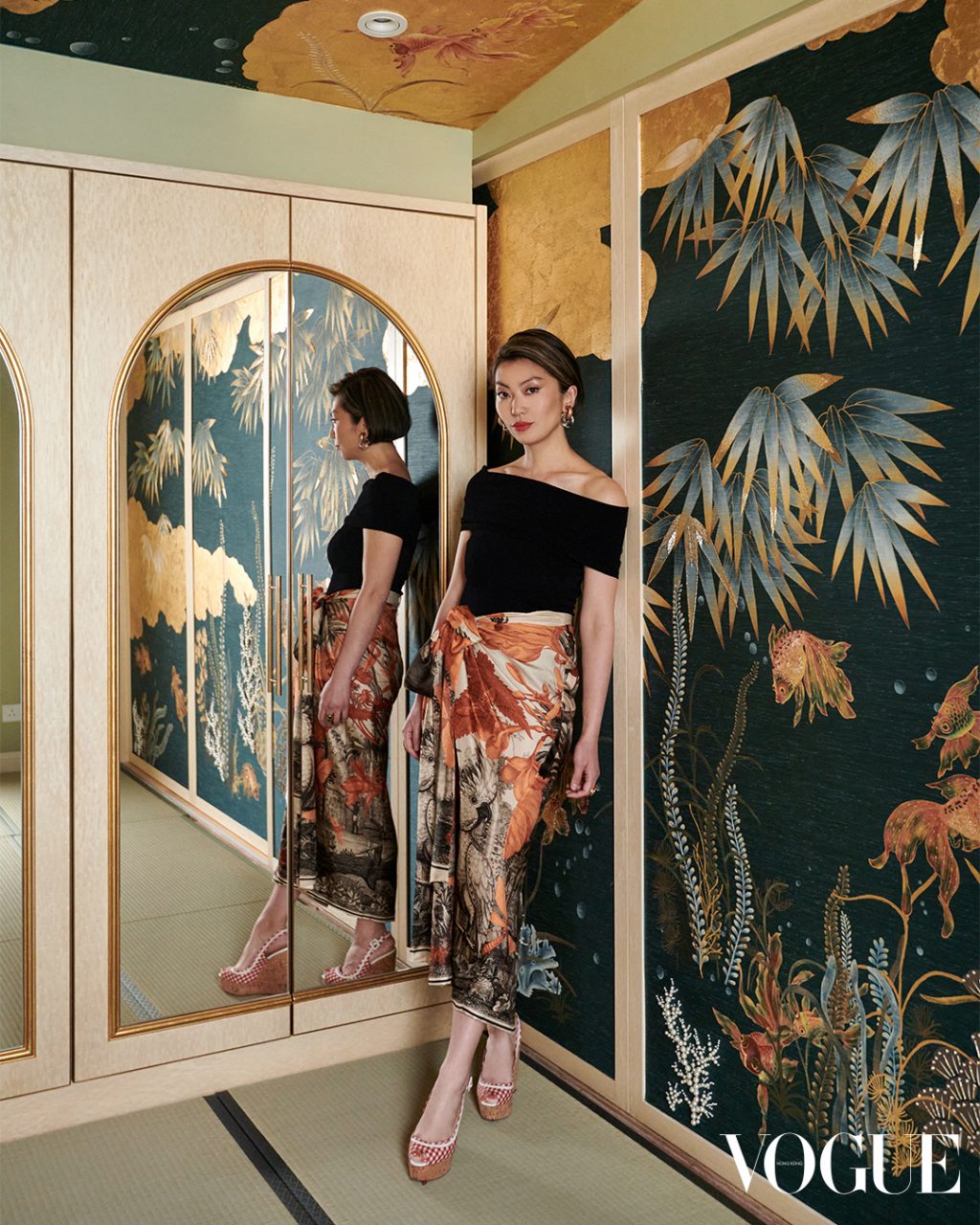First, a caveat. Anyone hoping to find an array of caricatured, Goop-arific novelty features in the Montecito home that Gwyneth Paltrow shares with her husband, writer-producer Brad Falchuk, is sure to be disappointed. There’s no plant-based, toxin-leaching, zero-gravity pod, no fermenting cabana, no crystal-powered sweat lodge. There are, to be sure, myriad elements specifically designed to nurture mind, body, and soul; they just happen to be far more discreet—things like Vitruvian proportions, sacred geometries, and a host of finely crafted architectural details that together represent a nuanced interpretation of wellness by design.
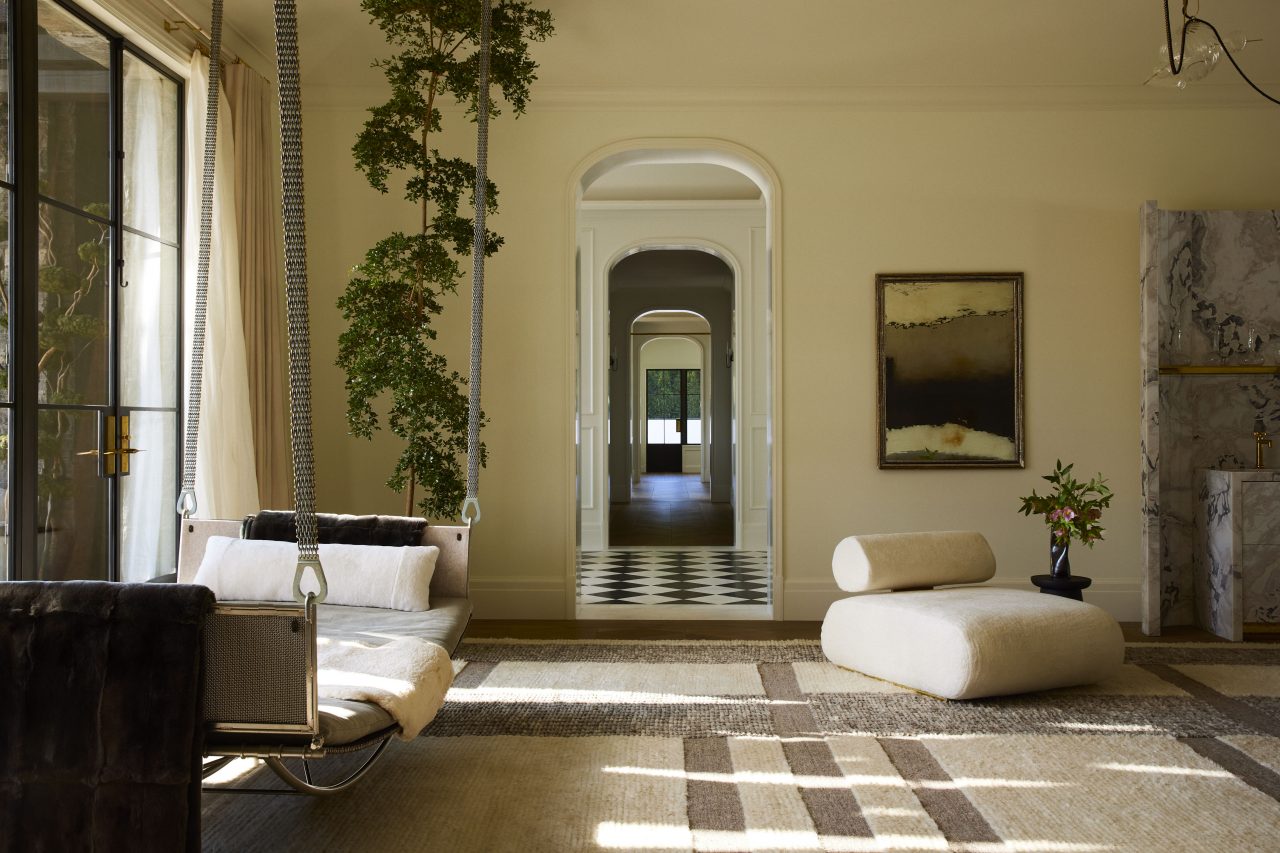
A Jim Zivic hammock for Ralph Pucci and an Alexander Díaz Andersson lounge chair grace the living room.
Photo: Yoshihiro Makino
“The strength of the house is in the subtleties of light and space,” Paltrow says. “We spent a lot of time assessing family patterns, how we really live, what makes us most comfortable. The focus was on the experience, the emotion.”
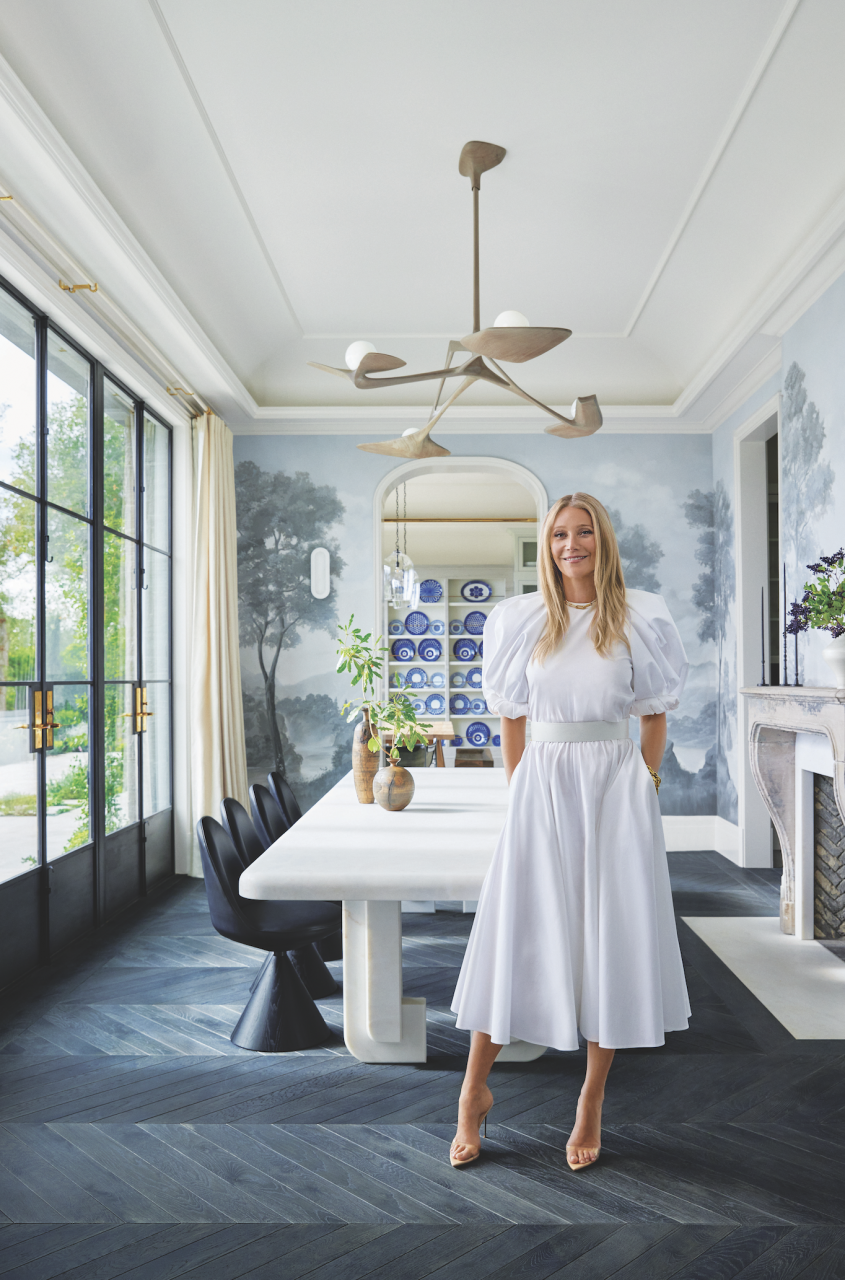
Gwyneth Paltrow, wearing a Khaite dress, Georges Chakra belt, Femme LA shoes, and Foundrae Jewelry, at home in Montecito, California. Fashion styling by Rob & Mariel.
Photo: Yoshihiro Makino
Paltrow first fell under the spell of Montecito during her two semesters at UC Santa Barbara, before she decamped to pursue a career in acting. “I’ve always gravitated toward Santa Barbara. Even when I was living in London, we’d take the kids there for holidays. It was our sweet gem of an escape in the U.S.,” she says. On one visit in 2015, Paltrow checked in on Redfin, her “favorite pornography app,” and discovered a generous lot for sale with a teardown but tons of potential. “It was like Grey Gardens,” she recalls. “There were wild animals living there and swarms of bugs, but I fell in love with the land and the views.”
And so Paltrow set out to fulfill the dream of building her first ground-up house. “That was chapter one of a long and arduous journey,” she notes wryly, citing the many technical complexities, unforeseen setbacks, and existential quandaries that inevitably arise in the process of home building. To tackle the assignment, Paltrow tapped her longtime collaborators Robin Standefer and Stephen Alesch of Roman and Williams, the AD100 firm that had previously designed the actress’s Tribeca loft, the first Goop pop-up shop, and the company’s first permanent boutique, in the Brentwood Country Mart. “Robin and Stephen brought a real elegance to a very spec-y New York apartment, and I wanted to replicate the feeling of serenity they managed to conjure,” Paltrow says. “The kids were much younger when I embarked on this project, and I wasn’t married to Brad, so I was ideating for a future self that didn’t exist yet,” she adds.
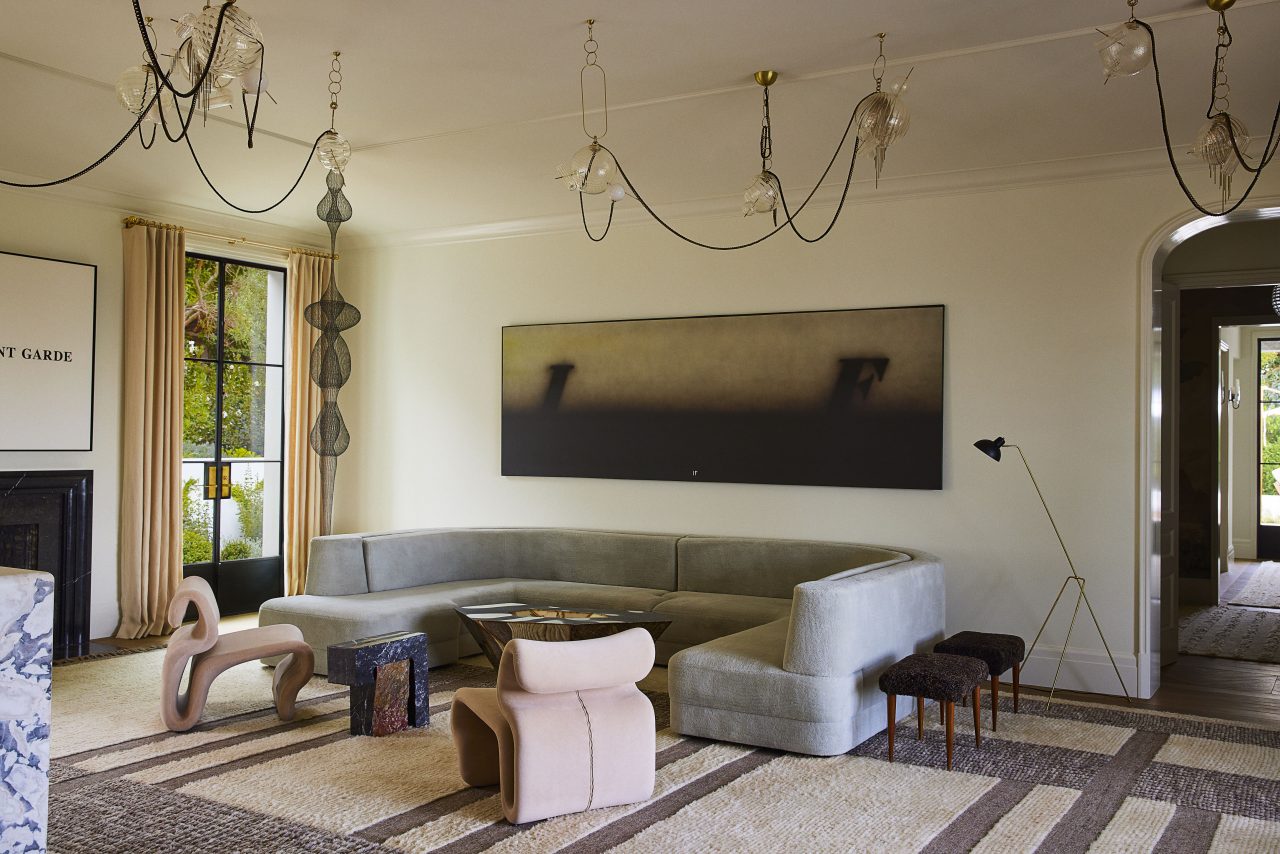
The living room is furnished with a Charles Zana sofa through The Invisible Collection, Jan Ekselius lounge chairs, A Space black marble side table, a Julian Mayor cocktail table, and a Lambert & Fils floor lamp. The painting is by Ed Ruscha.
Photo: Yoshihiro Makino
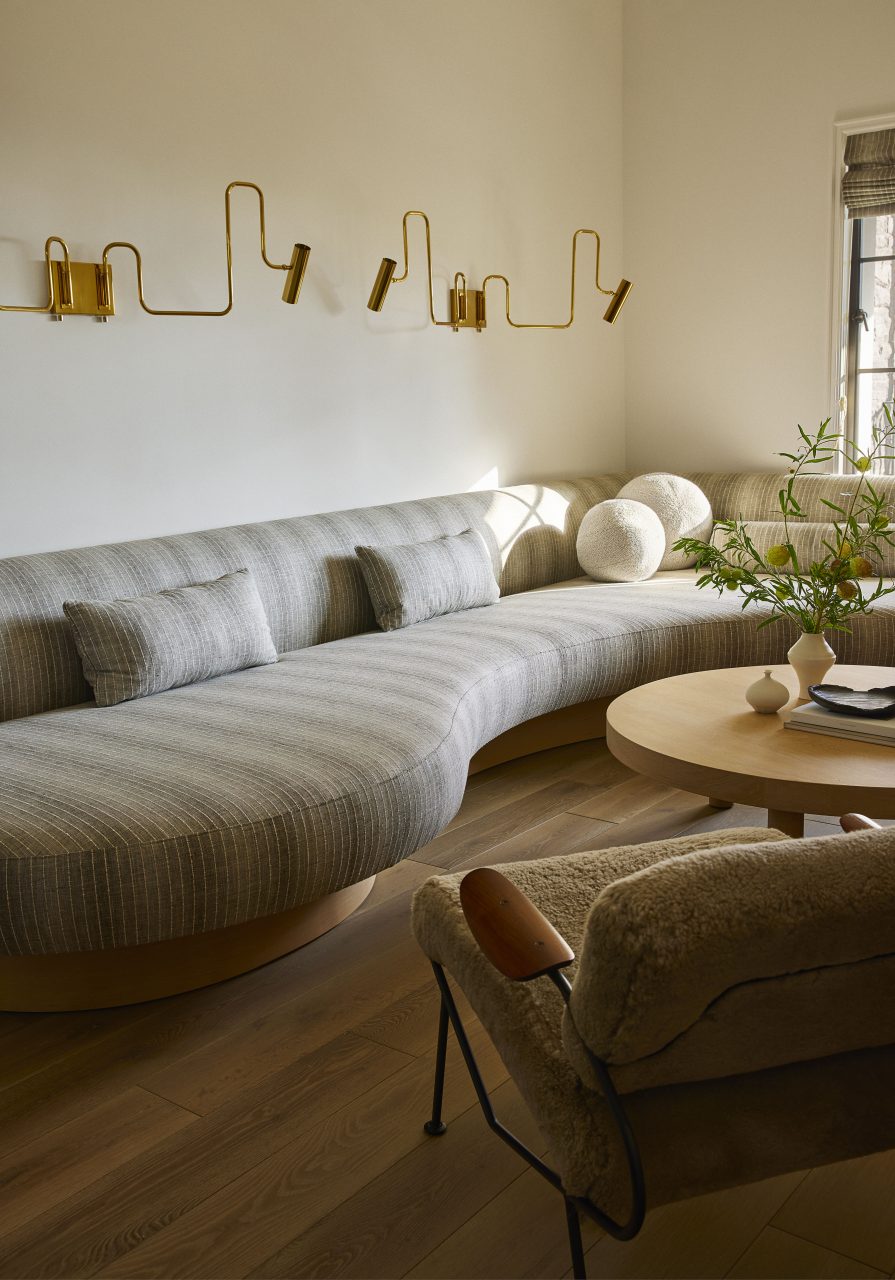
An upper-floor landing is outfitted with a custom sofa, a Nickey Kehoe cocktail table, and Gentner sconces.
Photo: Yoshihiro Makino
Paltrow describes the précis for the design of the house as “a Parisian apartment set within an old European barn, something with high ceilings, flooded with light, a place that feels generous yet manageable at the same time.” Drawing inspiration from the humble forms and rugged grace of Old World barns, the team from Roman and Williams responded with a scheme that deftly bridges the classical and the contemporary—a long, lean monolithic structure, laid out largely on one floor, with a shingled roof and stone walls that approximate the irregular rhythms and timeworn texture of dry-stack construction. The property is powered on solar energy, with a gray-water system, reflecting Paltrow’s commitment to environmentalism as an essential consideration in any homebuilding project.
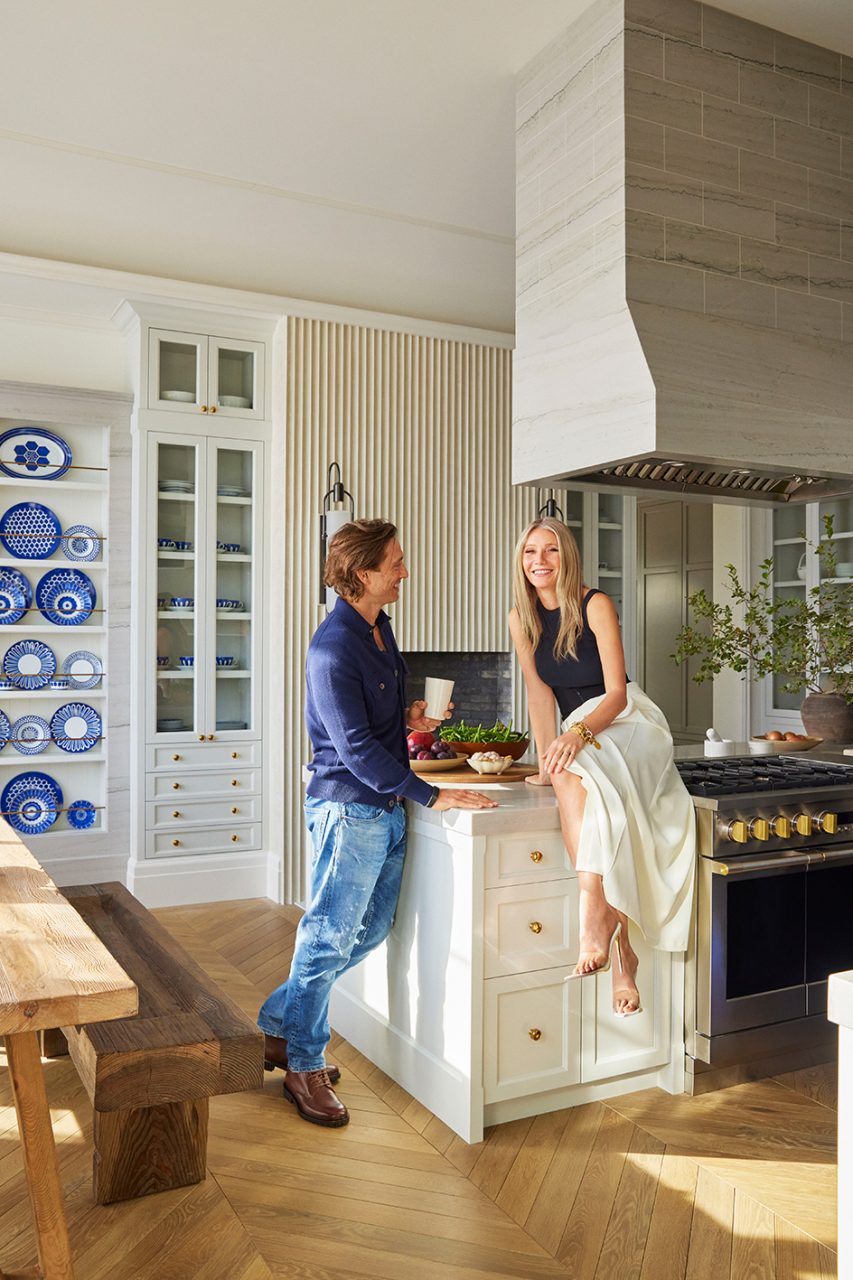
Gwyneth Paltrow, in an A.W.A.K.E. MODE outfit and shoes by Jessica Rich, and Brad Falchuk, wearing Koio shoes, in the kitchen. Custom benches pull up to an antique trestle table. Millwork and cabinetry by Roman and Williams; plates by Hermès; sconces by Allied Maker; Monogram Professional range. Fashion styling by Rob & Mariel.
Photo: Yoshihiro Makino
“A home should reflect the physicality and ethos of its owner, and this house takes its cues from Gwyneth’s height, beauty, and focus on distillation. You see it in the tall bones, the attenuated proportions, the radiused corners, and the slender molding profiles,” Standefer avers. “The house is built around extremely precise, thoughtful spaces that we refined again and again for years.”
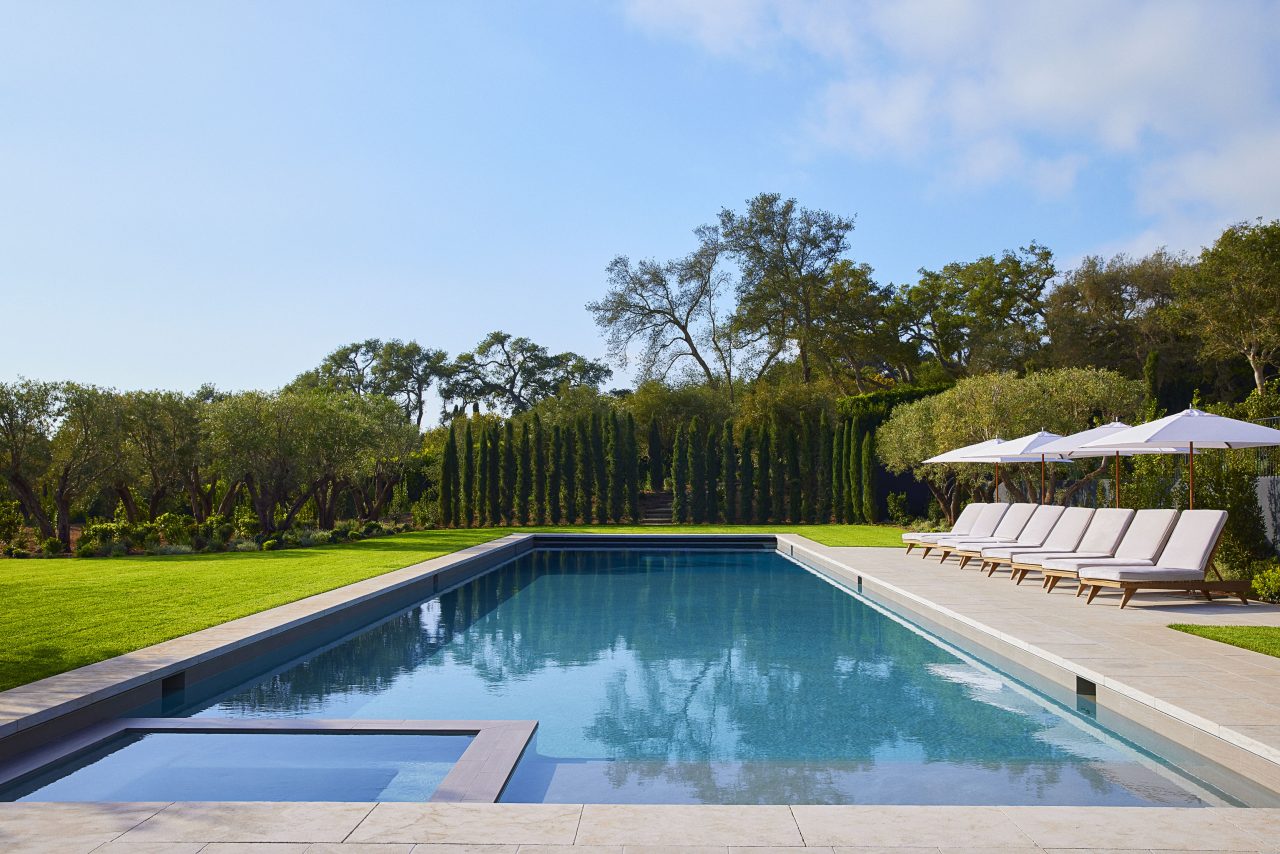
Umbrellas from Niche Beverly and custom chaise longues are arrayed along the pool deck.
Photo: Yoshihiro Makino
Standefer emphasizes the importance of craft and materiality in establishing the home’s soulful spirit and its particular sense of place, from the custom pewter-finished bronze doors to the antique fireplace mantels to the sculptural, freestanding onyx bar that anchors the capacious living room. The sybaritic home spa—think Baths of Caracalla meets Aman luxury—makes a particularly compelling case for Roman and Williams’s dexterous handling of form, flow, proportion, material, color, and texture. “It’s like an ancient bathhouse unexpectedly sheathed in these beautiful pale-green tiles with an Arts and Crafts vibe. We love investigating the tension and voltage between things you don’t normally see combined,” Standefer says.
When it came time to furnish the house, Paltrow, a self-proclaimed “furniture obsessive,” originally planned to do the decorating herself. “I thought I’d get a few great pieces and it would all be fine, but as time went by, I realized that there were so many layers, so many things that needed attention, that I couldn’t pull it off by myself,” she recalls. Paltrow eventually called upon AD100 designer Brigette Romanek, a close friend of more than two decades, to join the adventure. “Brigette’s more contemporary than I am, but I wanted to push myself. Plus, I knew it would be fun,” the actress notes.
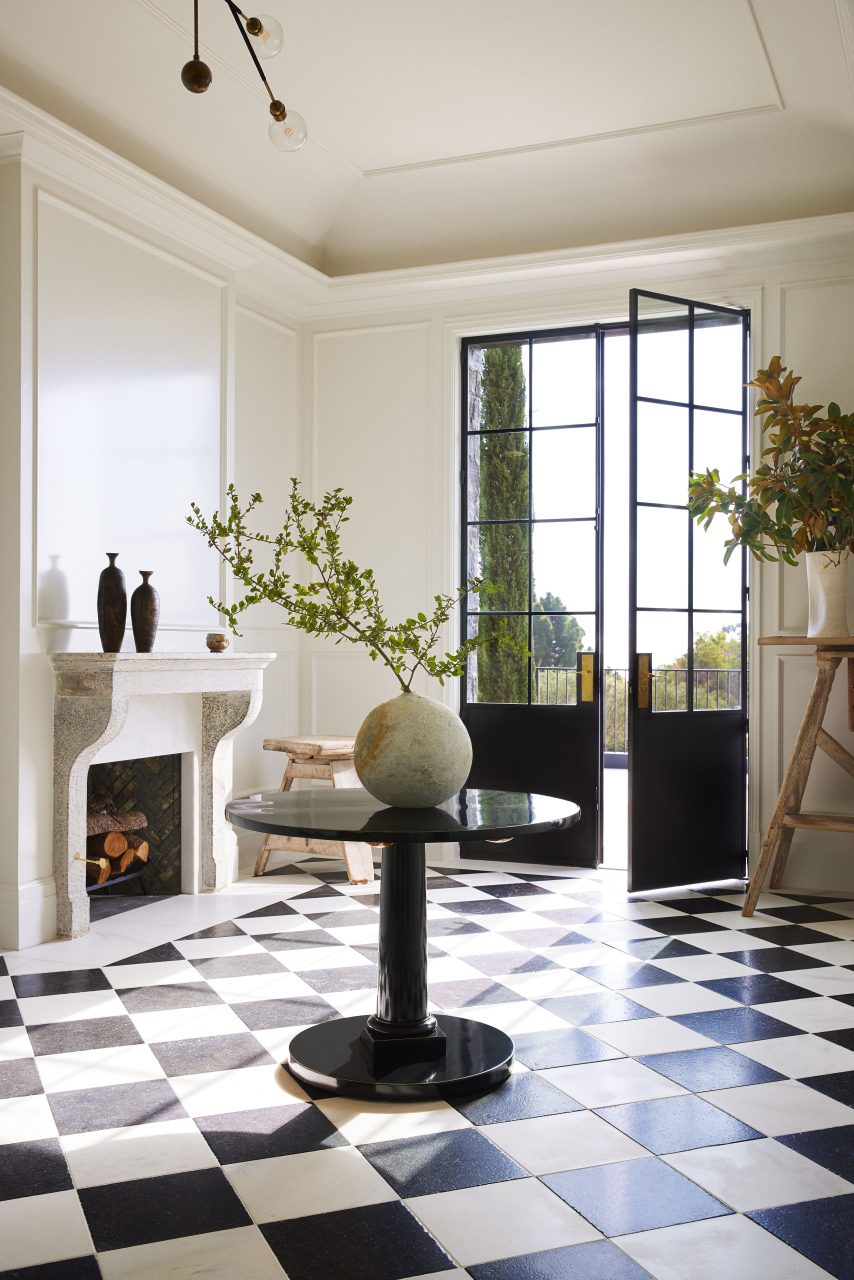
The entry has an 18th-century fireplace mantel and reclaimed-stone floors from Chateau `Domingue. The Akiko Hirai vessel on the center table is from RW Guild.
Photo: Yoshihiro Makino
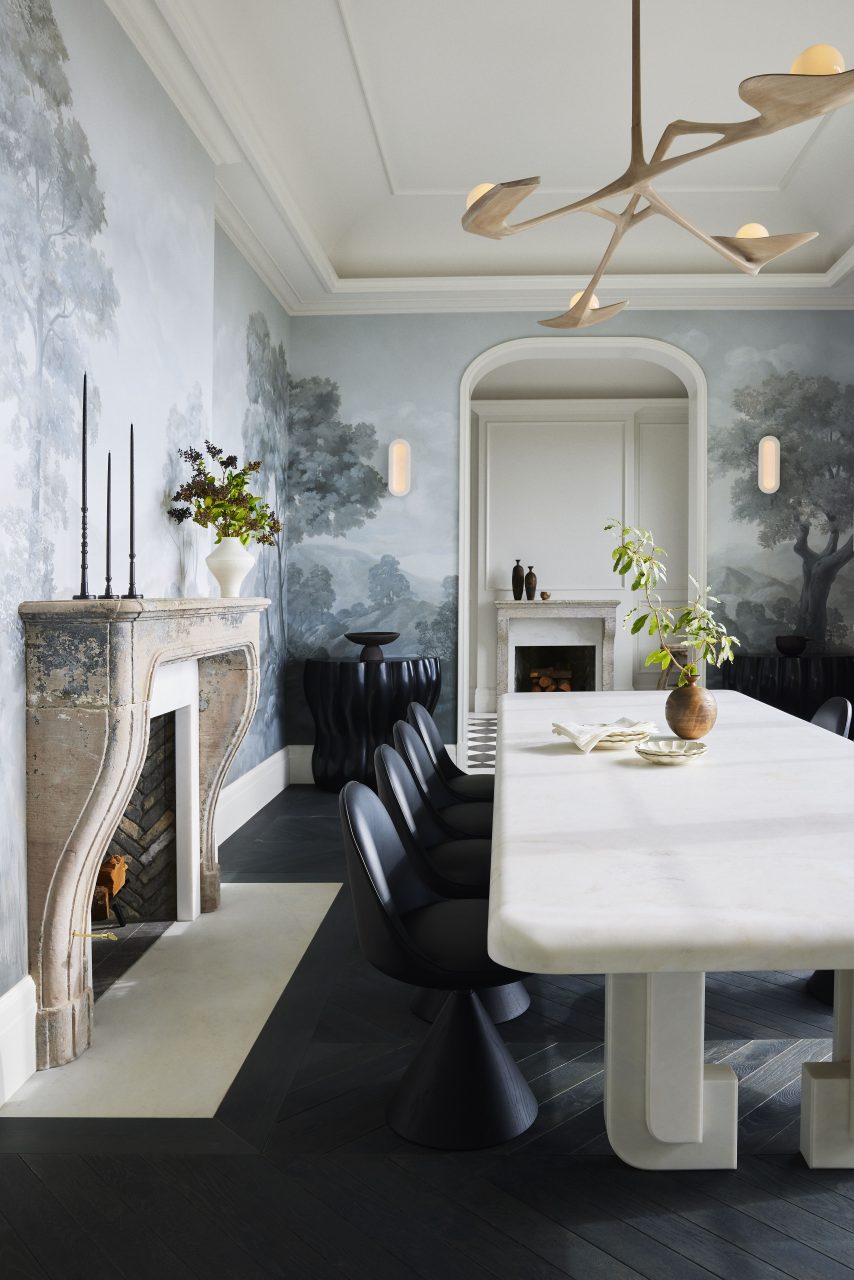
In the dining room, a Thomas Newman Studio chandelier crowns a Martin Massé table for Kolkhoze with GamFratesi chairs for Porro. Wallpaper by MJ Atelier, consoles by Robert Kuo, 18th-century fireplace mantel from Chateau Domingue, accessories from RW Guild.
Photo: Yoshihiro Makino
“Gwyneth knew exactly what she wanted. She knew the feeling, the energy, the narrative. It was my job to express those ideas in ways that would bring joy and beauty,” Romanek says of her purview. Like the architecture, the decor eludes antiquated definitions of traditional and contemporary, instead finding harmony in understated colors, organic textures, and strong, simple forms. The push and pull between old and new, soft and hard, delicate and muscular, comes to the fore in the elegant dining room, where a romantic hand-painted scenic wallpaper wraps an unfussy composition of striking contemporary lighting and furniture. “Gwyneth was more interested in substance than style per se. Yes, it had to be pretty, but she was most concerned with things like mood and movement,” Romanek observes.
Many of the furnishings have particular personal resonance for Paltrow. The Lindsey Adelman lighting installation on the living room ceiling, for example, was one of the first items she commissioned for the house. “I told Lindsey, ‘Here’s the room, make what you want.’ It’s an artistic intervention into this incredibly calm space, like a gorgeous field of punk-rock jewelry,” Paltrow says of the sinuous composition. The Jim Zivic hammock that hangs along one side of the room—a transplant from her Brentwood home in L.A.—has its own jewelry-like details, albeit expressed in a far more butch, industrial vocabulary.
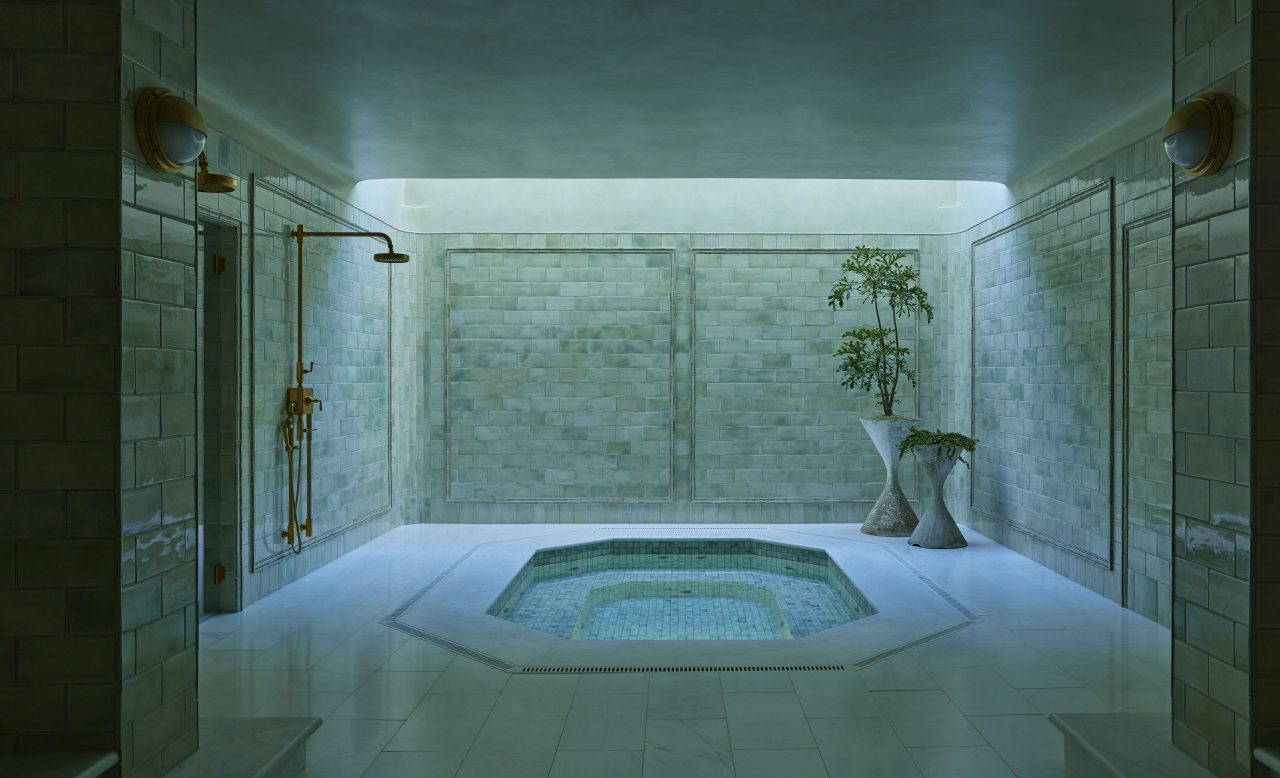
Clad in tiles by Bantam Tileworks, the spa has waterworks R.W. Atlas shower fixtures, Shiplights sconces, and Willy Guhl planters.
Photo: Yoshihiro Makino
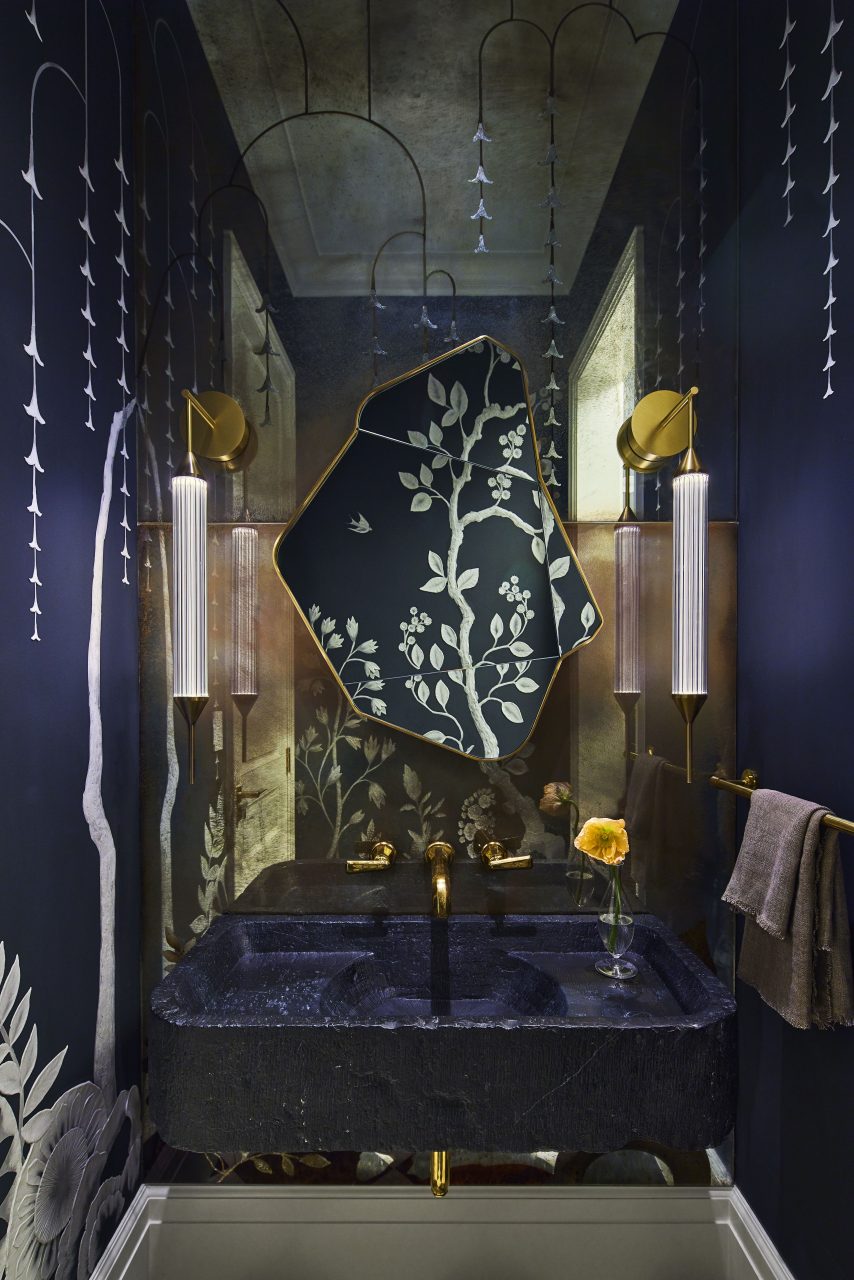
In a powder room, hand-painted wallpaper by MJ Atelier, sconces by Giopato & Coombes through StudioTwentySeven, and antique marble sink from Stone Objects with THG fixtures.
Photo: Yoshihiro Makino
Asked about any big takeaways from her six-year journey, Paltrow offers some battle-tested advice: “There will always be pain points in a project like this, but keep your eyes on the big picture,” she says. “This house has taught me so much about patience and gratitude. If you commit to design integrity and character, you’ll never be sorry.”
Editor
Mayer Rus
